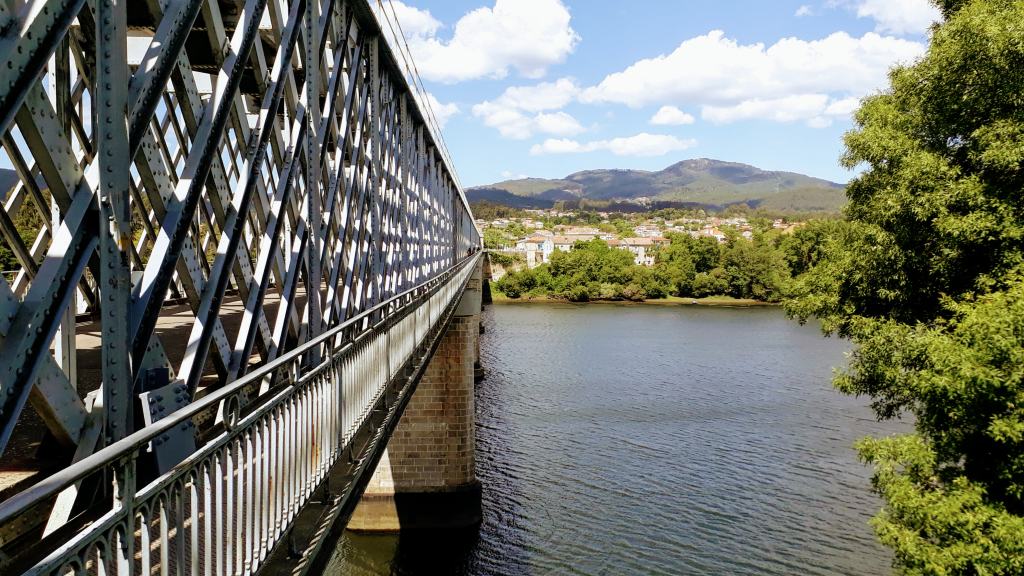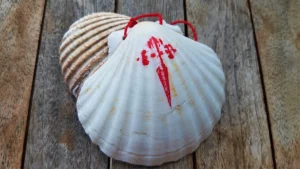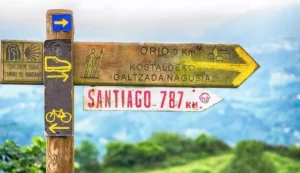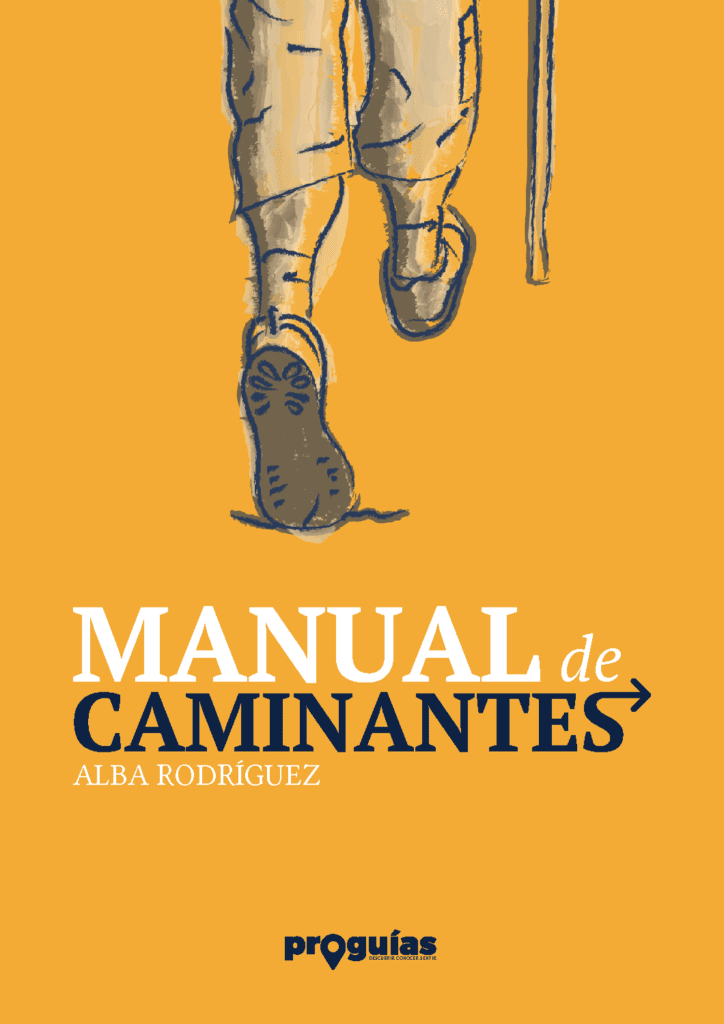What today is a quiet border town of just over 6,000 inhabitants perched over the river Minho, was once one of the seven capitals of the Kingdom of Galicia. It preserves some of the most interesting elements to be discovered in its urban centre from that period.
It is also an obligatory stop for pilgrims and hikers who walk along the Portuguese Way of Saint JamesThe route runs from south to north in the direction of Santiago de Compostela, crossing the Galician-Portuguese border at precisely this point.
The history of Tui dates back to prehistoric times. In the municipality there are several archaeological remains and vestiges of the Celtic culture that developed in the northwest of the Iberian Peninsula before the arrival of the Romans. Rome would have a prominent presence here, as would the Suevi, and the area would later come under Visigothic and Muslim influence. Tui even had a Jewish quarter, and was attacked by Vikings, Portuguese and French on different occasions. This is the substratum on which its streets and historic buildings are built. And now we are going to talk a little more about them.

What to see and do at Tui
1. St. Mary's Cathedral
The point that attracts most visitors to the historic centre of Tui is undoubtedly the spectacular St. Mary's cathedral-fortress. This basilica stands on a strategic hill for the control of the last stretch of the river Miño, which has been the natural border between Galicia and Portugal since the latter separated from the Kingdom of Galicia in 1139. Previously, the county of Portucale was part of Galicia. In fact, the dominions of the bishopric of Tui extended to both sides of the border even many years after the separation of this county and the birth of Portugal as a new kingdom.
The first temple to be built on this site was a Swabian basilica. But in 1120, work began to provide Tui with a cathedral in Romanesque style, to which new elements were added with new architectural languages. The main façade, dating from 1225, is considered the first Gothic sculptural ensemble in the Iberian Peninsula. Tui cathedral also has the largest medieval cloister in Galicia and the only one preserved in Gothic style, and organs whose case, the work of Domingo Rodríguez Pazos, is more than three centuries old.
Legend has it that there is a tunnel dug under the cloister for the bishop to leave the city in the event of a siege. The most conservative version says that it leads to a jetty on the river Miño. The most daring, that it also crosses the border under the riverbed and connects with the convent of Ganfei in neighbouring portuguese fortified town of Valença do Minho.
A curious fact about the cloister: in the eastern corner of the cloister you can see a menorah or seven-branched candelabrum engraved in the stone. This mark serves as a reference to explain the collaboration of the Jewish community in the construction of the great cathedral building.
And a quick tip: in the square that opens in front of the main façade of the cathedral you will find the Tui tourist office. It's a great place to pick up a map of the village and various explanatory brochures.
2. The medieval wall
Like all medieval cities, Tui also had its own walls. The walls had a defensive function, but they also served to order the entry and exit of goods and to collect the corresponding taxes. Nowadays, little remains of this medieval wall, but some remains can be seen.
At the crossroads of Rúa Ordoñez and Rúa Porta da Pía was precisely the Porta da Pía, the most important of the medieval entrances to the city. Its name refers to the font (in Galician, pia) for ritual baths, which was located next to the synagogue. The synagogue, of which nothing remains, stood where today a three-storey building with beautiful balconies stands. Here you can also see part of the medieval city wall.
Another of the city's gates, which also conserves its arch, is the Porta da Torre (Tower Gate), which gave access to the A Oliveira neighbourhood. This gate opens under the so-called Torre Vella (Old Tower), which Countess Theresa of Portugal ordered to be built in 1125 as part of the city's early medieval defensive system. Inside it was the ecclesiastical prison, and today it is part of the convent of the Poor Clares, which we will talk about below.
In the 17th and 18th centuries, on the occasion of the Spanish-Portuguese wars that affected Galicia, a new, larger walled system was built, the main remains of which can be seen today from the riverside promenade.
3. The convent of the Poor Clares
The other major religious building in Tui is the convent of the Poor Clares, which replaced the episcopal palaces that used to stand in the A Oliveira district. We know that, originally (1508), these nuns belonged to the Third Order of St. Francis, and that they did not change to the observance of the rule of St. Clare until the 20th century.
Today these cloistered nuns are popularly known as "as encerradas" (the locked in) and they make sweets to order. So one of the tastiest things to do in Tui is to go to the doorway of the convent, approach the window and ask for a box of almond fish when you hear "ave María" as a greeting. The little almond fish (in Galician, peixiños de améndoa) are the convent's most popular recipe. Of course, you won't see the nun handing them to you. The whole exchange is done through a lathe to avoid eye contact.
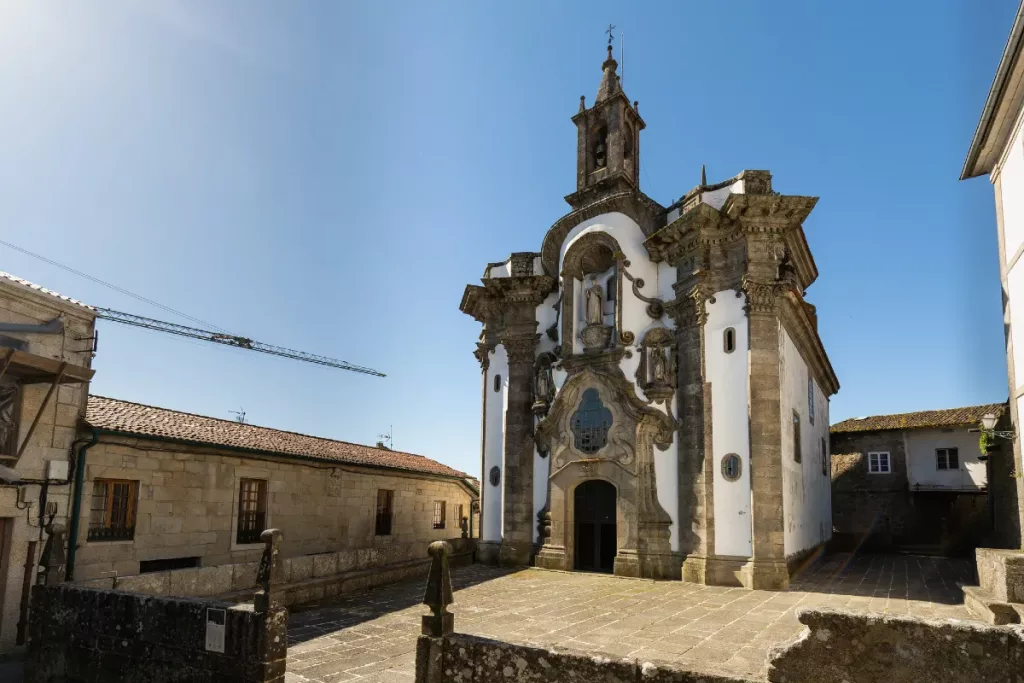
4. The chapel of St. Telmo
Another of Tui's architectural wonders is the chapel of St. Telmo. Built around 1770 on the site of the house in which the saint himself lived in the 13th century, it is the only example of Portuguese Baroque style in Galicia. And it is undoubtedly the example that will most attract the visitor's attention due to its original forms. St. Telmo, by the way, is the patron saint of Tui and of the entire diocese of Vigo-Tui.
Although you won't always find this chapel open, if you can, be sure to take a look inside to see its dome, its 19th-century frescoes and the main altarpiece. It also has interesting seafaring votive offerings that point to the devotion of the sailors' guilds.
5. The Jewish route through Tui
The history of the city of Tui is also the history of its Jewish quarter, one of the most important in the Kingdom of Galicia. The Jewish community settled here throughout the 11th and 12th centuries, initially in the upper part and later in the rest of the neighbourhoods.
The edict of expulsion signed by the Catholic Monarchs and the forced conversion of many Jews from 1492 onwards led to several episodes of persecution that put an end to the Jewish community in Tui.
However, the historic centre of the town still has several architectural and decorative elements linked to this community, as well as vestiges of uses such as the butcher's shop, the synagogue and the Jewish cemetery.
Today Tui has a Jewish route to visit the most interesting points of the historic centre. You can find the map with its guided points at the tourist office in San Fernando square, opposite the main door of the cathedral.
6. Lose yourself beyond the old town
Tui is a town on a human scale. This makes it very easy to walk around it and you don't need a lot of time, even though it is steep. That's why, as well as getting lost in the historic centre following the Jewish route, you can also do it outside, discovering some other points of interest, such as the convent of St. Domingo, the Alameda park and its fantastic viewpoint over the Miño river, or the riverside promenade.
Handbook of Pilgrims
Download the most complete guide to prepare the Camino de Santiago from scratch and step by step.
What to see and do from Tui
In addition to showing you what to see and do at Tui, if you have more time, in the vicinity of this city you can find several places of great interest. Here are 3 destinations that will not leave you indifferent.
7. Mount Aloia
North of Tui is one of the most spectacular natural parks in Galicia. Monte Aloia was, in fact, the first natural park declared in Galicia.
In addition to its natural wealth and hiking trails, it also offers spectacular views of the Baixo Miño and Val Miñor shires and even allows you to see the Cíes Islands.
Its recreational areas mean that many families in the area spend days of relaxation here.
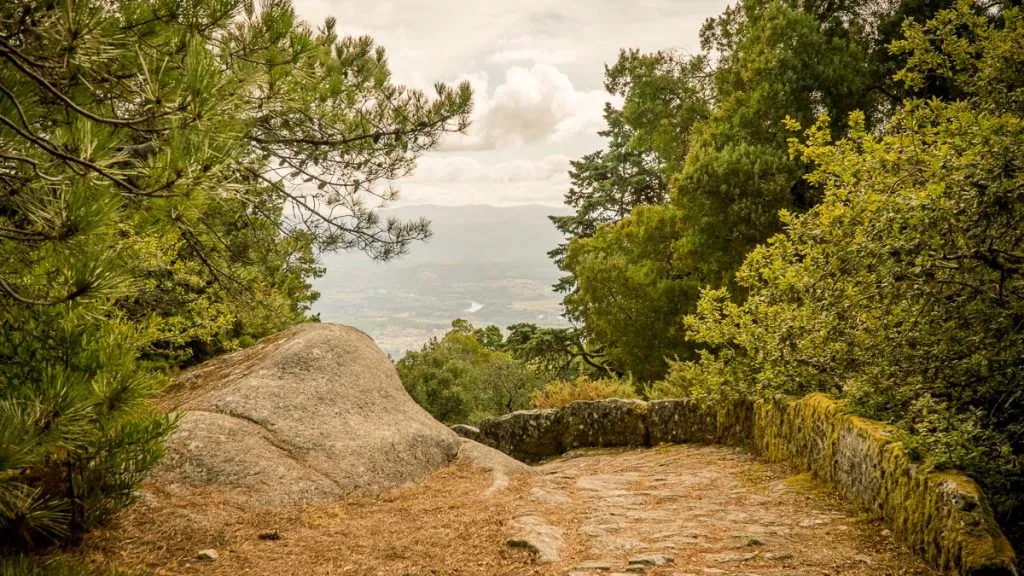
8. Santa Tegra hillfort
Another mountain worth visiting, not far from Tui, is the Santa Tegra mountain, in the neighbouring town of A Guarda - through which Coastal Portuguese Caminopasses. This mountain has, on its summit, at 341 metres above sea level, an immense Celtic hillfort from the 1st century BC, which was home to 5,000 people. Although for many people it may seem a chaotic settlement, the truth is that there is a logical order based on "family units".
Moreover, the views from the top are remarkable: on one side the mighty and endless Atlantic and the fishing village of A Guarda; on the other, the mouth of the Miño river and the northernmost shires of Portugal.
9. Valença do Minho
And speaking about Portugal: from Tui, there is nothing easier than leaving the town by the international bridge and crossing the border to Valença do Minho. The route can be perfectly done on foot - in fact, it is part of the Portuguese Way of St. James.
Valença do Minho offers a fantastic fortress whose origins date back to the 12th-13th century, but which was entirely refurbished in the 17th century during the Restoration War between the Kingdom of Portugal and the Crown of Castile.
At present, this praça-forte is bustling with life and showcases a multitude of small shops and lojas worth knowing.


